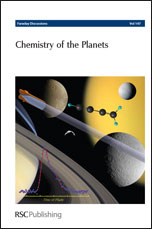Mixed ices play a central role in characterizing the origin, evolution, stability and chemistry of planetary ice surfaces. Examples include the polar areas of Mars, the crust of the Jupiter moon Europa, or atmospheres of planets and their satellites, particularly in the outer solar system. Atomistic simulations using accurate representations of the interaction potentials have recently shown to be suitable to quantitatively describe both, the mid- and the far-infrared spectrum of mixed H2O/CO amorphous ices. In this work, molecular dynamics simulations are used to investigate structural and spectroscopic properties of mixed and crystalline ices containing H2O, CO and CO2. Particular findings include: (a) the sensitivity of the water bending mode to the local environment of the water molecules which, together with structural insights from MD simulations, provides a detailed picture for the relationship between spectroscopy and structure; and (b) the sensitivity of the low-frequency spectrum to the structure of the mixed CO2/H2O ice. Specifically, for mixed H2O/CO2 ices with low water contents isolated water molecules are found which give rise to a band shifted by only 12 cm−1 from the gas-phase value whereas for increasing water concentration (for a 1 : 1 mixture) the band progressively shifts to higher frequency because water clusters can form. More generally it is found that changes in the ice structure due to the presence of CO2 are larger compared to changes induced by the presence of CO and that this difference is reflected in the shape of the water bending vibration. Thus, the water bending vibration appears to be a suitable diagnostic for structural and chemical aspects of mixed ices.
You have access to this article
 Please wait while we load your content...
Something went wrong. Try again?
Please wait while we load your content...
Something went wrong. Try again?

 Please wait while we load your content...
Please wait while we load your content...